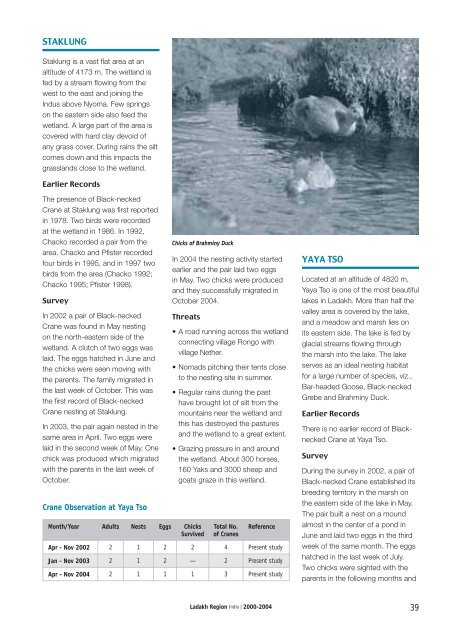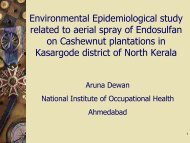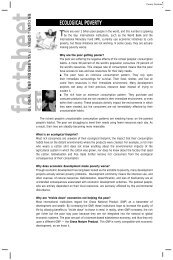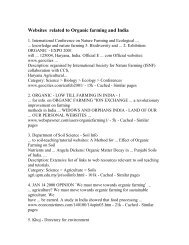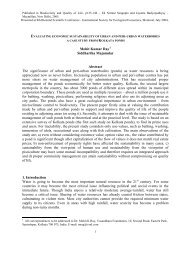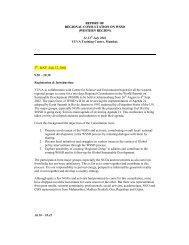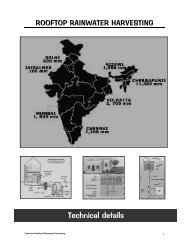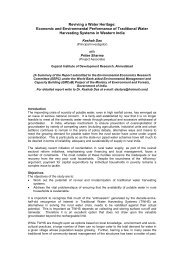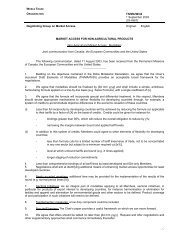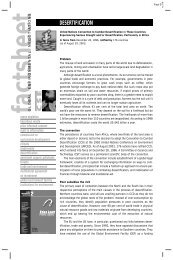Black-necked Crane - WWF-India
Black-necked Crane - WWF-India
Black-necked Crane - WWF-India
Create successful ePaper yourself
Turn your PDF publications into a flip-book with our unique Google optimized e-Paper software.
STAKLUNG<br />
Staklung is a vast fl at area at an<br />
altitude of 4173 m. The wetland is<br />
fed by a stream fl owing from the<br />
west to the east and joining the<br />
Indus above Nyoma. Few springs<br />
on the eastern side also feed the<br />
wetland. A large part of the area is<br />
covered with hard clay devoid of<br />
any grass cover. During rains the silt<br />
comes down and this impacts the<br />
grasslands close to the wetland.<br />
Earlier Records<br />
The presence of <strong>Black</strong>-<strong>necked</strong><br />
<strong>Crane</strong> at Staklung was fi rst reported<br />
in 1978. Two birds were recorded<br />
at the wetland in 1986. In 1992,<br />
Chacko recorded a pair from the<br />
area. Chacko and Pfi ster recorded<br />
four birds in 1995, and in 1997 two<br />
birds from the area (Chacko 1992;<br />
Chacko 1995; Pfi ster 1998).<br />
Survey<br />
In 2002 a pair of <strong>Black</strong>-<strong>necked</strong><br />
<strong>Crane</strong> was found in May nesting<br />
on the north-eastern side of the<br />
wetland. A clutch of two eggs was<br />
laid. The eggs hatched in June and<br />
the chicks were seen moving with<br />
the parents. The family migrated in<br />
the last week of October. This was<br />
the fi rst record of <strong>Black</strong>-<strong>necked</strong><br />
<strong>Crane</strong> nesting at Staklung.<br />
In 2003, the pair again nested in the<br />
same area in April. Two eggs were<br />
laid in the second week of May. One<br />
chick was produced which migrated<br />
with the parents in the last week of<br />
October.<br />
<strong>Crane</strong> Observation at Yaya Tso<br />
Chicks of Brahminy Duck<br />
In 2004 the nesting activity started<br />
earlier and the pair laid two eggs<br />
in May. Two chicks were produced<br />
and they successfully migrated in<br />
October 2004.<br />
Threats<br />
Month/Year Adults Nests Eggs Chicks<br />
Survived<br />
• A road running across the wetland<br />
connecting village Rongo with<br />
village Nether.<br />
• Nomads pitching their tents close<br />
to the nesting site in summer.<br />
• Regular rains during the past<br />
have brought lot of silt from the<br />
mountains near the wetland and<br />
this has destroyed the pastures<br />
and the wetland to a great extent.<br />
• Grazing pressure in and around<br />
the wetland. About 300 horses,<br />
160 Yaks and 3000 sheep and<br />
goats graze in this wetland.<br />
Total No.<br />
of <strong>Crane</strong>s<br />
Reference<br />
Apr - Nov 2002 2 1 2 2 4 Present study<br />
Jan - Nov 2003 2 1 2 — 2 Present study<br />
Apr - Nov 2004 2 1 1 1 3 Present study<br />
YAYA TSO<br />
Located at an altitude of 4820 m,<br />
Yaya Tso is one of the most beautiful<br />
lakes in Ladakh. More than half the<br />
valley area is covered by the lake,<br />
and a meadow and marsh lies on<br />
its eastern side. The lake is fed by<br />
glacial streams fl owing through<br />
the marsh into the lake. The lake<br />
serves as an ideal nesting habitat<br />
for a large number of species, viz.,<br />
Bar-headed Goose, <strong>Black</strong>-<strong>necked</strong><br />
Grebe and Brahminy Duck.<br />
Earlier Records<br />
There is no earlier record of <strong>Black</strong><strong>necked</strong><br />
<strong>Crane</strong> at Yaya Tso.<br />
Survey<br />
During the survey in 2002, a pair of<br />
<strong>Black</strong>-<strong>necked</strong> <strong>Crane</strong> established its<br />
breeding territory in the marsh on<br />
the eastern side of the lake in May.<br />
The pair built a nest on a mound<br />
almost in the center of a pond in<br />
June and laid two eggs in the third<br />
week of the same month. The eggs<br />
hatched in the last week of July.<br />
Two chicks were sighted with the<br />
parents in the following months and<br />
Ladakh Region <strong>India</strong> | 2000-2004 39


